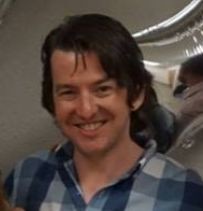
Name: Jason Rhode
From: ATLANTA, GA
Votes: 0
Self-driving cars are not the future. No cars are the future. The
Automated Vehicle (AV) is a patch on what was a bad idea from the
start.
Cities once
functioned as networked villages. An urban dweller’s needs could be
met within a twenty-minute distance. Time was, Americans went to work
using streetcars. People used to walk in the roads. Children played
there. Then cars came. Cars seized the boulevards for themselves.
They took money from mass transit and they bulldozed homes and built
flat hard ribbons of concrete through every town, usually through
multi-ethnic neighborhoods, cutting cities into pieces, the poor from
the rich, the people of color from the whites. In Dallas, Freedman
Towns were destroyed for the I-345, which separated Downtown from
Deep Ellum and East Dallas. It happened that way in your town, too.
And the cars weren’t finished. A quarter of all urban land was made
over into parking. Then cars gutted urban cores and drove the people
out to subdivisions and sprawl reigned and made 85% of Americans
spend their lives in traffic, commuting 8 billion hours in 2015 on
their way back to broad-lawned houses where the neighbors barely knew
each other. And the cars still weren’t done. They poisoned skies and
heated oceans, and made people spend two of every eight hours they
worked to pay for the very cars they had to purchase to come to their
job. By the end of the 20th century there were 410,000 miles of
pavement; Americans drove on these roads distracted, drunk, stoned,
and angry. Error was easy, the cost high: average of ninety-six
fatalities a day, 30,000 fatal accidents per year, 2,000 victims
under age 16. 9.6 million deaths since 1899. This was progress. All
hail the glory of the machines.
When you’re in a
hole, stop digging. AVs are a slightly improved shovel. Nothing more.
MIT’s Kent Larson said the biggest error of last century was building
cities around cars. Even electric automobiles vampire off the grid,
fed by coal and natural gas. And any kind of car takes up space.
Robin Chase wrote that simply removing drivers but “keeping
everything else about our system the same, will be a disaster.
Picture zombie cars — those with no one in them — clogging our
cities and our roads, because it will be cheaper to keep them moving
than to pay for expensive urban parking, and cheaper to bring retail
to a customer than to pay rent on a retail store.” An endless
horde of sleepwalking vehicles, circling blocks forever.
James Veazey,
trucker, agrees. “The trucks I have seen. They absolutely
terrify me,” Veazey wrote. “Self driving trucks just
absolutely terrify me. Think 80,000 lbs. downhill, relying on a
computer to know the grade, curve, other traffic. (And now add ice).
… I have one quote for you from Jurassic Park, ‘just because you
can build a thing, doesn’t mean you should.'” The highways, he
wrote, “are subject to intense moments of chaos. There isn’t
much intuition in the computer trucks.”
Tech media
champions AVs to a striking degree. Corporations want AVs because
fewer drivers means more profit. But even if AVs become reliable
(they won’t) and ethical (given a choice, does the AV kill a
bystander or a driver?), they are still life support for a bad
system. You cannot lifehack this. American society forces you to own,
rent, or borrow a car. This must stop.
AVs limits our
prospects. New Urbanism is the future: settlements which focus on
people, walkable cities, close-knit communities. We will reclaim the
streets, plant community gardens, pioneer shared spaces and smart
planning. The future is mass transit. Here is how change happens: a
vision of tomorrow is shared by large numbers of people. Movies,
books, and magazine articles paint pictures of what will come. Since
the public believes in these pictures, it is crucial these images not
focus on automobiles, of any kind. Let us choose a world of good
cities and smooth rails and green spaces within and without their
boundaries. A world without cars.